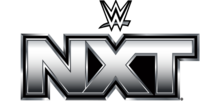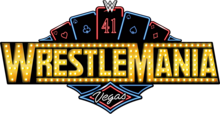Where Are They Now? Vader

It was the second blow that knocked Vader’s eye out. He’s sure about that. He’s watched the tapes back, obsessing over the way his longtime rival Stan Hansen nearly blinded the 450-pound world champion in front of 77,000 fans in the Tokyo Dome.
Both men were known for being aggressive, but they were really laying it in that night. The match had started off ugly when the mighty Texan bashed Vader with a bull rope before the bell even rang. The giant was out for revenge after that and began smashing his opponent with hammer fists in the corner. Desperate for survival, Hansen used an old bar fighting trick and thumbed Vader twice in the right eye.
The first shot stunned him. The second one forced his eyeball right out of the socket.
Had things ended there, the bout still would have earned its own bizarre place amongst wrestling tape traders and YouTube surfers — the infamous eye pop out match. But it didn’t. Dazed and shaken, Vader stumbled backwards, jerked his mask off and somewhat nonchalantly shoved his eyeball back in his head. Then he wrestled for another 10 minutes. (PHOTOS)
“It was just instinct,” Vader told WWE.com during a lengthy conversation about his extraordinary life. “I popped it back in and it swelled up real quick and held it in, but that cost me about 30 percent of my vision, broke all the bones in my orbital, broke every bone in my nose. I had to have reconstructive surgery. That p****d me off. ”
This is the kind of story you want to hear when you talk to Vader, but this story is not that kind of story. Not entirely, anyway. In truth, it’s the story of how a kid named Leon White became the world famous wrestling champion known as Vader and the struggles he went through to become Leon White all over again.
It begins in the 1960s in the notoriously dangerous area of Los Angeles known as South Central. Leon was raised here in a place where, he said, “you either grew up pretty fast or you got consumed.”
His childhood was a rough one. Once, two men broke into the house through a bedroom window while Leon and his sister were home by themselves. White grabbed his sister's hand in a panic and ran to a neighbor’s house where the cops and his parents were called. It was a traumatizing moment, but the kids were given little comfort.
“I remember my dad coming home, getting the shotgun out of the gun rack, loading it and giving it to me,” White said. “He said, ‘If they come back, you know what to do,’ and went back out. I was eight years old.”
 Vader was born big, but his size often put him at a disadvantage. A talented football player, he was too powerful to mess with the children his own age, so he was forced into rough games with older kids.
Vader was born big, but his size often put him at a disadvantage. A talented football player, he was too powerful to mess with the children his own age, so he was forced into rough games with older kids.
“It doesn’t sound like much now, but believe me that two and three-year jump at that early age is a big deal,” he said. “I got the hell beat out of me.”
They were brutal years, but they made White tough. By the time he graduated from L.A.’s Bell High School, he was a nationally ranked offensive center and one of the most heavily recruited athletes in the country. A full scholarship brought him to the University of Colorado where he became a two-time All American before being drafted by the Los Angeles Rams in 1978. The big man played in Super Bowl XIV, but a knee injury brought a premature end to his career after only two seasons. He pursued real estate after that and did well, but the work bored him.
A lifelong athlete, White desired something physical and aggressive, which naturally led him to professional wrestling. Breaking in was easy. American Wrestling Association promoter Verne Gagne took one look at the 6-foot-5, 450-pound wrecking ball and saw a wealth of opportunity.
Trained briefly by Olympic wrestler Brad Rheingans, White was huge and inexperienced, which made him dangerous. That meant only the roughest veterans would get in the ring with him. For six long months in 1985, Leon “Baby Bull” White was thrashed night in and night out by tough guys like his future rival Stan Hansen, the 475-pound Jerry Blackwell and Bruiser Brody who once, according to White, hit him so hard with a steel chair that it left an impression in his back that said “Made in Milwaukee.”
“I don’t know if it was planned to see if I’d quit, but they beat me unmercifully,” he admitted.
It was a bad time for White. Not so much because of the beatings — he could take a beating, he proved that already — but because he wasn’t developing as a talent. He wouldn’t start learning how to be a solid performer until 1987 when he was sent by Gagne to Otto Wanz’s Catch Wrestling Association in Germany.
“That’s where I learned my first wrestling hold,” Vader said. “There were a couple of referees over there that I would pay. They would show up in the ring early and show me how you lock up, how you hit a rope.”
Now going by the name Bull Power, White blossomed as a powerhouse and quickly rose to the top of the CWA, winning the promotion’s championship within months of his debut. The bruiser’s power and agility were beginning to gain attention (“I could bench press 600 pounds and dropkick at the same time,” he said) and New Japan Pro-Wrestling promoter Antonio Inoki was one of the men who took notice.
 At the time, Inoki was developing a character he called Big Van Vader. Inspired by a Japanese comic book villain, Vader would be a complete monster that entered the ring wearing a massive, spiked helmet that spewed smoke. It was a main event spot that Inoki had considered for both Ultimate Warrior and Sid Vicious, but he was impressed by White’s physicality in Germany and made him a large money offer.
At the time, Inoki was developing a character he called Big Van Vader. Inspired by a Japanese comic book villain, Vader would be a complete monster that entered the ring wearing a massive, spiked helmet that spewed smoke. It was a main event spot that Inoki had considered for both Ultimate Warrior and Sid Vicious, but he was impressed by White’s physicality in Germany and made him a large money offer.
Vader debuted with NJPW in the winter of 1987 as a surprise opponent for Inoki and battered the star so badly that riots broke out in the stands. In an instant, he was the most hated villain in Japanese wrestling.
“It just caught fire,” Vader remembered. “We would go to hotels and they would mob me. Every night was sold out for a long, long time.”
Putting a marketable persona on top of Vader’s size and ability turned him into a global sensation at the tail end of the 1980s. He was so dominant that at one time he held major championships in Japan, Germany and Mexico simultaneously. Vader wasn’t just a gorilla in a helmet, though. He could go and his blistering brawls — specifically the aforementioned eyeball incident — garnered him the interest of Ted Turner’s World Championship Wrestling.
“I saw him in some matches versus Stan Hansen in Japan,” former WCW employee and current WWE Hall of Famer Jim Ross told WWE.com. “He was agile and very aggressive, so we brought him in.”
____________________________________________
WWE Shows Latest Results
Raw results, March 17, 2025: Cody Rhodes has wild confrontation with John Cena on The Road to WrestleMania
Full ResultsSmackDown results, March 21, 2025: Reigns, Punk and Rollins engage in a chaotic brawl with WrestleMania implications
Full ResultsWWE NXT results, Mar. 18, 2025: NXT Champion Oba Femi, Trick Williams and Je'Von Evans get into a HUGE brawl
Full Results--bc342595557680d63b618648e2d37c1d.jpg)








--de3612b9543981440a24489e0e568d9b.png)





